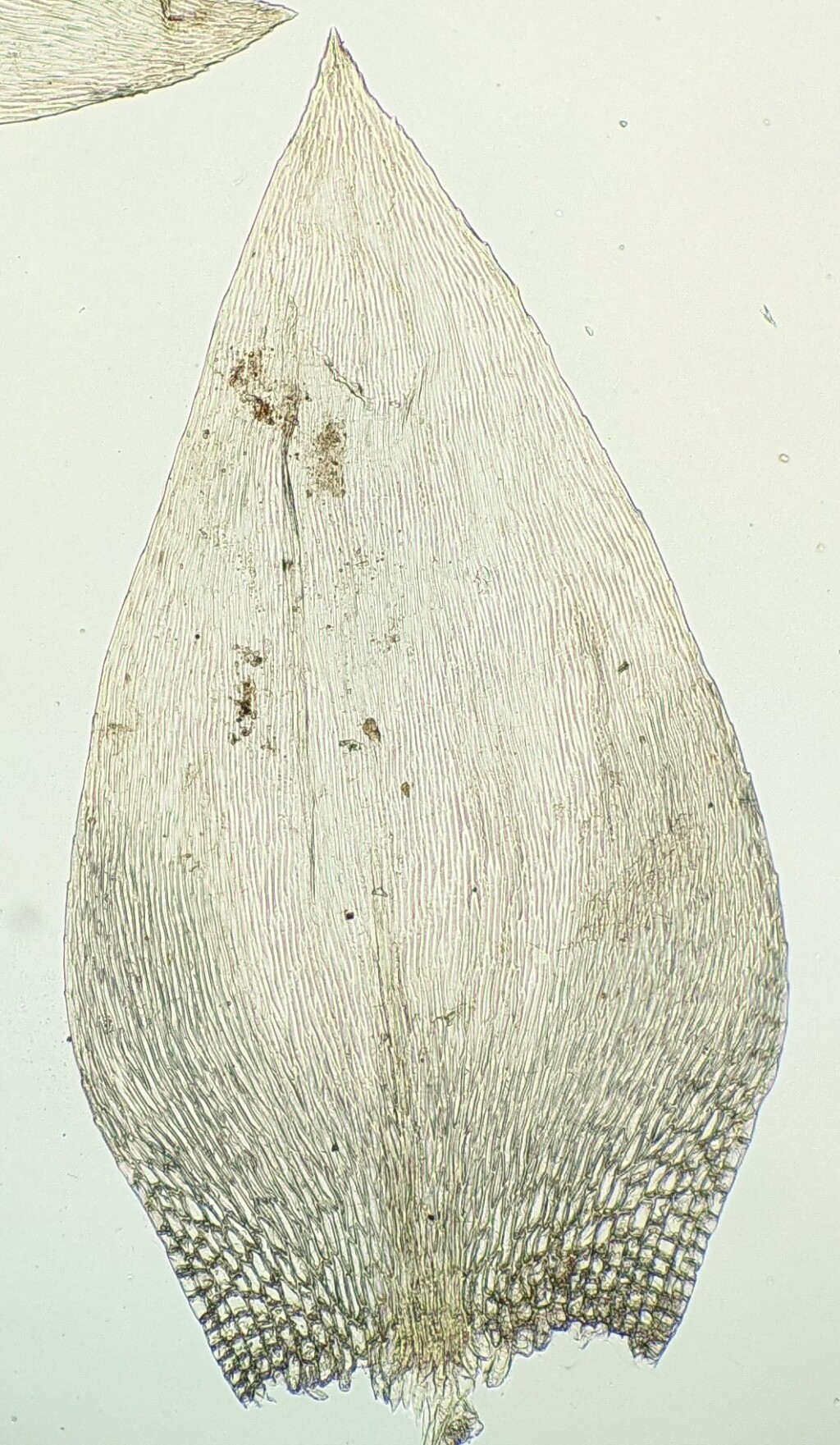Entodontaceae
Autoicous or rarely dioicous (not in Victoria). Asexual propagules absent. Mats on rocks, soil, logs or trees. Stems creeping or occasionally ascending (not in Victoria), irregularly, subpinnately or pinnately (not in Victoria) branched, with relatively short branches, with rhizoids clustered on ventral surface; paraphyllia absent; pseudoparaphyllia present, foliose; central strand present or absent (not in Victoria). Leaves arranged around stem and facing all directions or complanate, monomorphic, rarely stem leaves much larger than branch leaves (not in Victoria) or slightly dimorphic when complanate (not in Victoria), erect to erect-spreading when moist, scarcely altered or becoming appressed when dry, decurrent (not in Victoria) or not; apex obtuse (not in Victoria), apiculate (not in Victoria), acute or acuminate, without a hairpoint; costa double, very short to extending to around midleaf (not in Victoria), single (not in Victoria) and terminating in basal half to extending into apical half, or absent (not in Victoria); margins entire throughout (not in Victoria) or serrulate toward apex, erect, plane or reflexed near base (not in Victoria), without a border; laminal cells linear or oblong, smooth; alar cells differentiated, quadrate to short-rectangular, numerous and enlarged or inflated, or not differentiated (not in Victoria). Pleurocarpous. Capsules erect, rarely slightly inclined, symmetric, exserted, operculate, with (not in Victoria) or without an annulus. Calyptra cucullate, smooth, glabrous or rarely sparsely hairy (not in Victoria). Operculum high-conic (not in Victoria), or straight- (not in Victoria) or obliquely rostrate. Peristome double and alternate, inserted well below the mouth; exostome of 16 entire teeth, usually not shouldered, rarely with an adherent prostome (not in Victoria); endostome of 16 linear segments, rarely rudimentary and adherent to exostome (not in Victoria) or absent (not in Victoria), without (not in Victoria) or with a low or rudimentary basal membrane; cilia mostly absent, rarely rudimentary (not in Victoria).
Five genera and around 160 species shared between all continents except Antarctica, but most diverse in high altitude tropical areas (Buck 1980, 1990; Kunglu et al. 2003; Câmara & Buck 2012); one genus and species in Victoria.
The Entodontaceae are characterised by being pleurocarpous with erect capsules with inset peristomes that are variably reduced relative to other pleurocarp families that have well-developed ‘hypnoid’ peristomes comprising a well-developed exostome, endostome and its basal membrane, and cilia (Kunglu et al. 2003).
 Spinning
SpinningBuck, W.R. (1980). A generic revision of the Entodontaceae. Journal of the Hattori Botanical Laboratory 48: 71–159.
Buck, W.R. (1990). A monograph of Entodon (Entodontaceae) in Australia, eastern Melanesia and southern Oceania. Australian Systematic Botany 3: 701–709.
Câmara, P.E.A.S; Buck, W.R. (2012). A re-interpretation of the Fabroniaceae, a phylogenetic perspective . The Bryologist 115: 109–117.
Kunglu, E.M.; Bonner, L.; Longton, R.E. (2003). Patterns of peristome reduction and ornamentation in African Entodontaceae. Journal of the Hattori Botanical Laboratory 93: 223–246.



